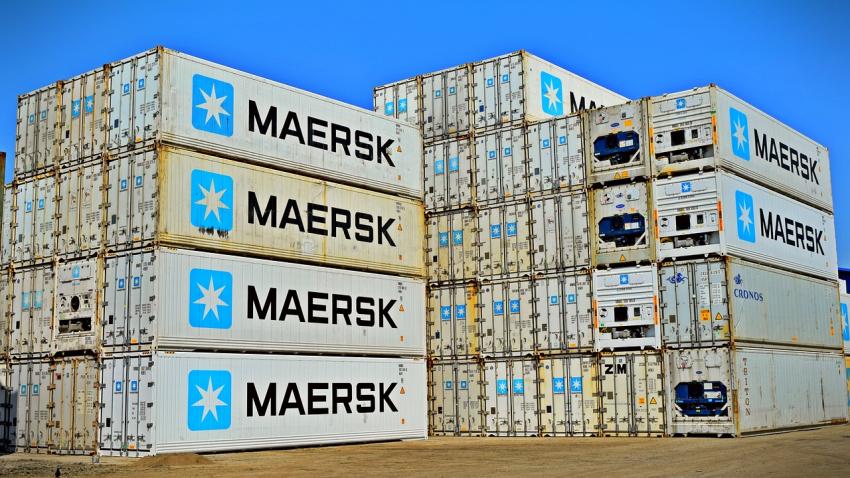You are here
Back to topPeru’s Fruit Exports Expected To Overtake Chile’s Within 5 Years

According to statistics from Peru’s Ministry of Agricultural Development and Irrigation, Peruvian agricultural exports reached a record $7.56 billion in 2022. While Chile still remains substantially ahead, with exports worth $10.66 billion during the same period, Peru’s agricultural exports have been growing at an average annual rate of 10.1% over the past decade, outpacing Chile’s average growth rate of 2.4%. César Romero, a foreign trade expert at the ministry, expects Peru’s agricultural exports to overtake Chile’s within the coming years, reaching an estimated $12.21 billion by 2027.

Reports suggest that serious water supply problems are affecting agricultural production in Chile. Owing to privatization, water rights in Chile are acquired through auction, which has led to suboptimal use of water resources.
With a large labor force and an abundant water supply, Peru offers excellent conditions for agricultural production. The climate in coastal areas acts like a “natural greenhouse” that allows for year-round cultivation. Peru is already the world’s leading exporter of blueberries and grapes, and it is rapidly catching up with Chile in the production of cherries, kiwifruit, plums, apples and asparagus.
Peru vs. Chile: Blueberries, avocados and grapes
Statistics from Peru’s Ministry of Agricultural Development and Irrigation suggest an average annual growth rate of 123.3% for Peruvian blueberry exports, compared with just 2.6% for Chile. In 2022, Peru’s blueberry exports reached a record $1.36 billion, while Chile’s total blueberry exports were worth $509 million. Just a decade ago, in 2012, Peru’s blueberry exports were virtually zero, while Chile’s blueberry exports were worth $395 million. By 2018, however, Peru had already caught up. The following year, Peru overtook Chile to become the world’s leading blueberry exporter.

Between 2012 and 2022, Peru’s exports of fresh avocados grew at an average annual rate of 20.7%, compared with just 3.3% for Chile. In 2022, Peru’s avocado exports reached $895 million, over four times greater than the $213 million registered for Chile.
Over the same period, Peru’s grape exports increased at an average annual rate of 14.1%, reaching a record high of $1.46 billion in 2022. Chile’s grape exports also hit a record high during the same period, although the annual growth rate was a mere 1.9%. In 2021, Peru’s grape export volume exceeded that recorded for Chile. However, in 2022, Chile’s efforts to introduce new varieties brought a more successful harvest, allowing it to once again regain the top position.
Peru consolidating agricultural exports
Romero pointed out that in order to ensure the sustainable development of agricultural exports, the Peruvian government must consolidate new agricultural land. The government, he said, has advanced two large irrigation projects: the Majes-Siguas II project in Arequipa and Chavimochic III in La Libertad, which will cover 38,500 and 63,000 hectares, respectively. According to data from the Peruvian Association of Agricultural Producers, around 60,000 hectares in Peru are currently used for agricultural exports. The addition of these two irrigation projects would almost triple that figure.
Peru’s agricultural exports are concentrated among a relatively small number of countries. Eight nations — the United States, the Netherlands, Spain, the United Kingdom, Chile, China, Germany and Ecuador — account for 71% of Peru’s agricultural exports. Consequently, there is ample room for Peru to develop new markets from Asia to Australia.
Agricultural experts have stressed the importance of technological innovation, the signing of phytosanitary agreements and the reduction of logistics costs in order to enhance the competitiveness of Peru’s agricultural exports.
Peru’s agricultural exports totaled $3.52 billion between January and May of this year, an increase of 0.2% compared with the same period of 2022. Without new trade restrictions or adverse weather events, Peru’s agricultural exports are anticipated to reach $10 billion as early as 2025.
Images: Pixabay (main image), Peruvian Ministry of Agricultural Development and Irrigation (body images)
This article was translated from Chinese. Read the original article.

















Add new comment